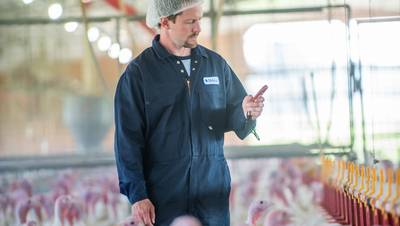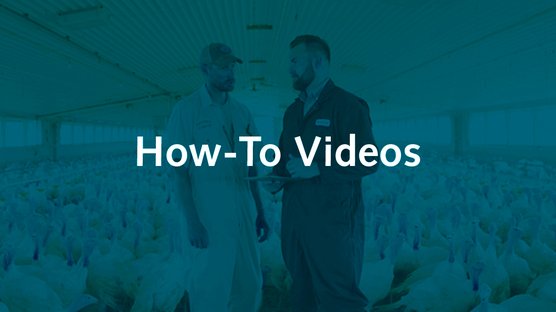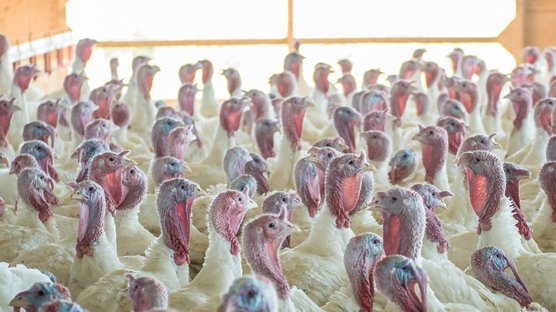
Published on Aug. 30, 2019
Know your footprint!
These days, we are all encouraged to be aware of our carbon footprint. But as a turkey grower, are you aware of a different footprint? This would be the heat footprint inside your barn.
Particularly during the brooding phase, birds are very sensitive to their surroundings and are not able to regulate their internal temperature. Therefore, it is very important to make sure that your heat source projects the right temperatures where the birds will find feed and water. In order for your poults to start eating and drinking right away, it is important that they are warm enough to move around and explore their environment.
No matter your brooder set up, temperatures should be carefully controlled in the first few days and weeks of placement. Below is a simple diagram to help you remember the correct temperature range.
Whole room set up
When starting your poults in a whole room set up, the brooding environment should have an even distribution of floor temperatures ranging from 90°F-95°F (32°C-35°C), with an optimal target of 93°F-94°F (34°C-34.5°C) across the feed and water space.
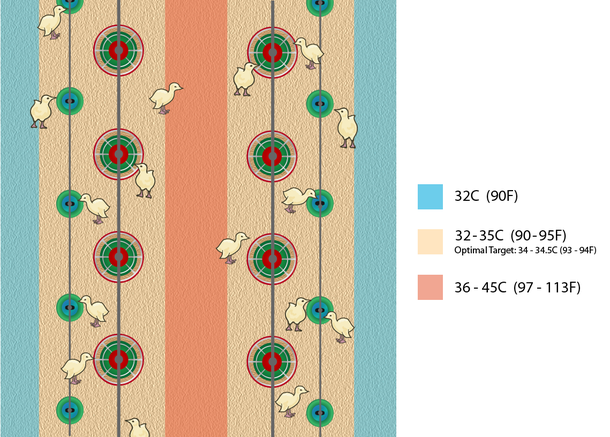
Ring set up
In ring brooding, provide a range of temperatures where the poults can find their point of comfort. There should be no cold drafts and proper air exchange in the barn. Directly underneath the stove, maintain a range of 97°F-113°F (36°C - 45°C), across food and water temperatures should be 90°F - 95°F (32°C - 35°C), optimally 93°F-94°F (34°C-34.5°C) and along the edge of the ring, 88°F-90°F (31°C-32°C).
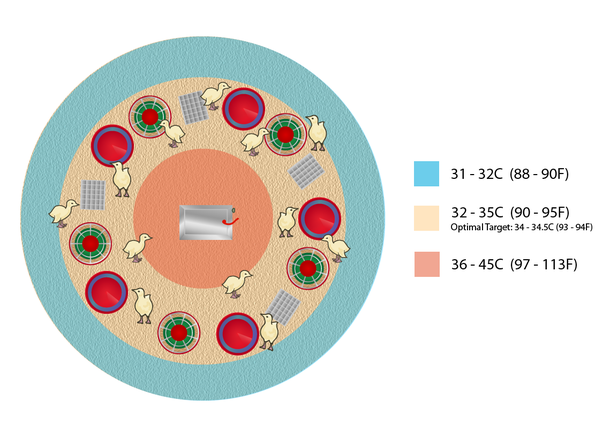
How to check
You can look at bird behavior and/or sensor tools to check that your heat footprint is correct. If you notice poults are backing away from feed and water underneath a heat source, the temperatures are likely too high. If they are huddling together and are not actively eating and drinking, they are probably too cold. Both overheating and cooling can result in large numbers of flip-overs if left unchecked.
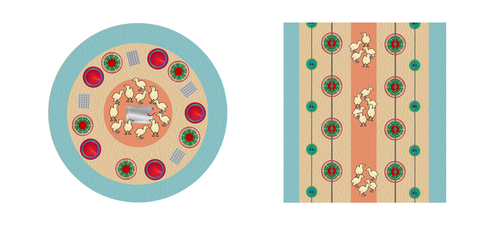
Example of poults that are too cold

Example of poults that are too warm
You can also use a temperature sensor, placing it at bird level in the areas with feed and water to check ranges.
Knowing your footprint means taking big strides in bird health and performance. For additional assistance with creating the right environment for your birds, contact our technical team.

